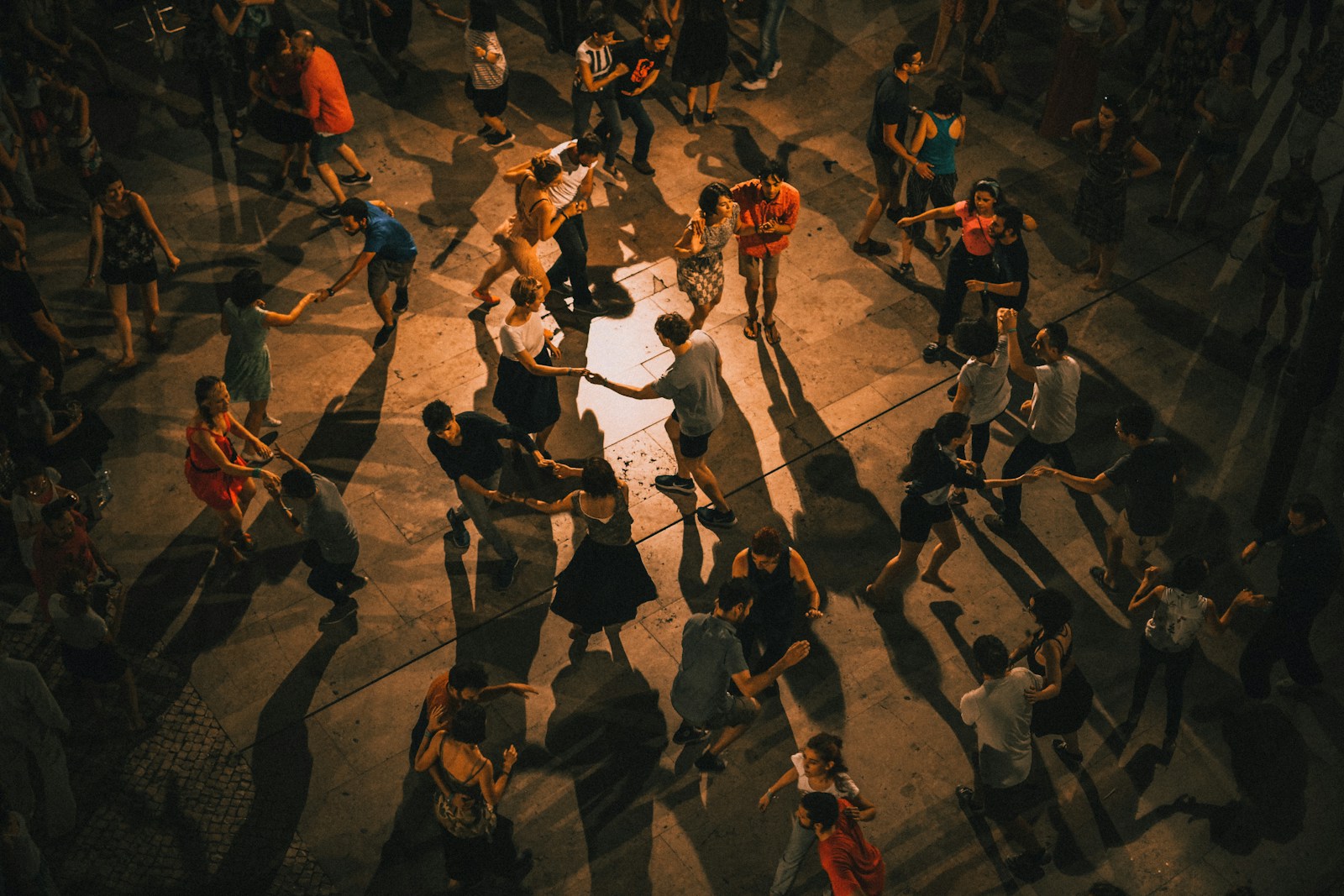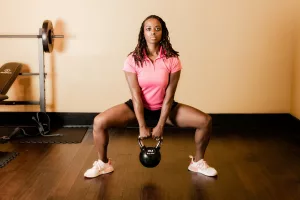Dancing has long been celebrated as a joyful activity, transcending cultures and generations. It’s more than just a form of entertainment; it’s a powerful tool for enhancing mood and fitness. Let’s delve deeper into the myriad benefits of regular dancing, providing insights and actionable tips to maximize these advantages. Dancing releases endorphins, often referred to as the ‘feel-good’ hormones, which lead to an improved mood and reduced stress levels. This hormone release creates a sense of euphoria and boosts overall mental well-being. The rhythmic movements and music in dancing act as a form of therapy, allowing for emotional release and self-expression. If you’re feeling down, consider turning up your favorite tunes and dancing in your living room. You’ll likely find that your spirits lift almost instantly.
A Cardiovascular Workout in Disguise
Regular dancing is a fun and effective way to improve heart health. It involves constant movement and engages large muscle groups, similar to traditional cardio exercises but with added enjoyment. The sustained physical activity increases heart rate, improves circulation, and strengthens the cardiovascular system. For those who dread treadmill routines, dancing provides a delightful alternative. Consider joining a local dance class or dance fitness group to stay motivated and consistent.
Building Strength Through Dance
The varied movements in dancing help tone and strengthen different muscle groups, enhancing muscle tone and bone density. Dance styles like ballet focus on core strength and lower body muscles, while salsa and hip-hop engage the arms and shoulders. This full-body workout reduces the risk of osteoporosis and improves strength and flexibility. Try incorporating a mix of dance styles into your routine to target various muscle groups and keep your workouts fresh.
Balancing Act: Coordination and Stability
Dancing requires coordination between different body parts, enhancing balance and motor skills. Quick changes in direction, spins, and intricate footwork challenge coordination and proprioception, improving overall balance and stability. These skills are crucial in preventing falls and injuries, especially for older adults. Practicing dance routines that focus on complex steps can further enhance these abilities. For example, ballroom dancing offers excellent opportunities to work on balance and coordination with a partner.
Cognitive Boost from Learning Dance Routines
Learning new dance routines and patterns stimulates the brain, improving memory, focus, and cognitive abilities. The mental engagement required in remembering steps, coordinating movements, and following rhythms enhances brain function and neuroplasticity. Studies have shown that regular dancing can reduce the risk of cognitive decline and improve cognitive performance across various age groups. Engage in dance styles that require memorization and quick thinking, like jazz or tap dancing, to reap these cognitive benefits.
Flexibility: Stretching Beyond Limits
Dancing involves stretching and reaching movements that increase flexibility and improve joint mobility. The dynamic nature of dance helps lubricate joints, stretch muscles, and improve the range of motion. Regular practice can lead to greater flexibility, preventing injuries and enhancing overall physical performance. Incorporate a stretching routine before and after dance sessions to maximize flexibility gains. Consider styles like contemporary dance, which emphasizes fluid movements and stretches.
Shedding Pounds with Dance
Dance workouts are an effective way to burn calories, aiding in weight loss and maintenance. High-energy movements in dance routines elevate heart and metabolic rates, leading to increased calorie expenditure. Depending on the intensity and duration, dance can significantly contribute to a healthy weight management plan. For a high-calorie burn, try high-intensity dance styles like Zumba or aerobic dance sessions. Tracking your progress with a fitness app can help maintain motivation and monitor results.
Social Connections Through Dance
Dancing classes and events provide opportunities to meet new people, build friendships, and enhance social well-being. The communal nature of dancing fosters connections with others who share a love for music and movement. Socializing during dance sessions improves communication skills, boosts confidence, and creates a sense of belonging. Joining a local dance club or attending dance events can expand your social circle and create lasting friendships.
Easing Anxiety and Depression
The combination of physical activity, music, and social engagement in dancing helps alleviate symptoms of anxiety and depression. Dancing encourages mindfulness, relaxation, and self-expression, reducing stress and improving mood. The social aspect of dancing provides emotional support and a sense of community, combating feelings of isolation. Consider participating in dance therapy sessions, which are specifically designed to address emotional well-being through movement.
Posture and Body Awareness
Dance movements promote better posture, body alignment, and awareness, leading to improved body mechanics. The focus on positioning, alignment, and core engagement in dance routines corrects postural imbalances and strengthens core muscles. Improved posture not only enhances appearance but also reduces musculoskeletal problems. Incorporate ballet barre exercises into your routine to specifically target posture and core strength.
Confidence Through Dance Mastery
Mastering dance routines and feeling comfortable on the dance floor boosts self-confidence and self-esteem. The sense of achievement in learning new dance skills and performing in front of others builds self-assurance. Dancing provides a platform for self-expression and self-discovery, empowering individuals to embrace their uniqueness. Challenge yourself by learning a dance routine to perform at a social event, which can be a rewarding experience that enhances self-confidence.
Breathing Life into Lungs
The aerobic nature of dancing improves lung capacity and respiratory function, benefiting overall respiratory health. The combination of cardiovascular exercise and deep breathing in dancing enhances lung efficiency and oxygen uptake. This improvement in respiratory health contributes to better endurance, stamina, and overall lung function. Engaging in dance styles that emphasize breath control, such as contemporary or modern dance, can further enhance these benefits.
Unwinding Through Dance
Dancing serves as a form of stress relief, allowing individuals to express themselves and release tension. The rhythmic movements, music, and emotional expression create a therapeutic outlet for stress management. Engaging in dance sessions can help individuals unwind, relax, and focus on the present moment, reducing anxiety and promoting relaxation. Dedicate a few minutes a day to dance to your favorite song as a quick stress reliever.
Creative Expression Through Movement
Dance is a creative outlet that allows individuals to express emotions, thoughts, and feelings through movement. The artistry in dance enables the conveyance of inner selves, stories, and emotions without words. Whether through choreographed routines or freestyle dancing, individuals explore creativity, imagination, and emotional depth. Encourage creative expression by participating in improvisational dance workshops or creating your own choreography.
Revitalizing Energy Levels
Regular dance sessions increase energy levels, reduce fatigue, and enhance overall vitality. The physical activity and enjoyment in dancing invigorate the body and mind, promoting feelings of vigor and vitality. Dance sessions provide a natural energy boost, revitalizing individuals and improving overall well-being. Use dance as a midday pick-me-up to combat the afternoon slump, rejuvenating your energy levels.
Heart Health and Circulation
Dancing lowers blood pressure, improves circulation, and reduces the risk of cardiovascular diseases. The combination of aerobic exercise, muscle engagement, and rhythmic movement benefits heart health. Regular dance practice helps regulate blood pressure, strengthens the heart muscle, and reduces the risk of heart-related conditions, promoting cardiovascular well-being. Incorporate heart-pumping styles like Latin or African dance to maximize cardiovascular benefits.
Sleep Like a Dancer
Physical activity like dancing promotes better sleep quality by helping regulate sleep patterns and reducing insomnia. The physical exertion and mental relaxation in dancing contribute to improved sleep onset and quality. Regular engagement in dance activities helps individuals establish a healthy sleep routine, enhance sleep efficiency, and promote restful sleep. Finish your day with a calming dance session to wind down and prepare for a good night’s rest.
Strengthening Relationships
Dancing with friends or a partner strengthens bonds and creates lasting memories, fostering relationships. Sharing the joy of dance with others strengthens emotional connections, builds trust, and enhances communication. Partner dances, in particular, promote teamwork, cooperation, and mutual understanding, improving social bonds and creating shared experiences. Consider joining a couples’ dance class to strengthen your relationship while learning something new together.
Embracing Body Confidence
Regular dancing can lead to a positive body image, promoting self-acceptance and confidence in one’s physical appearance. The physical movement and expression in dancing help individuals appreciate their bodies and focus on their strengths. Improvements in fitness, posture, and overall well-being through dancing boost self-esteem and body confidence, leading to a more positive self-image. Attend body-positive dance classes that celebrate diversity and inclusivity to foster a supportive environment.
Holistic Approach to Well-Being
The combination of physical, mental, emotional, and social benefits of dancing contributes to overall well-being and improved quality of life. Dancing provides a holistic approach to health and wellness, addressing physical fitness, mental health, emotional expression, and social interaction. The diverse benefits of dancing collectively enhance individuals’ quality of life, promoting happiness, fulfillment, and a sense of well-being. Integrate dance into your lifestyle as a regular practice to enjoy a balanced and fulfilling life.




